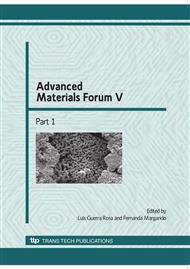p.1496
p.1504
p.1511
p.1518
p.1525
p.1533
p.1541
p.1548
p.1555
Effect of Water Jet and Electroerosion Cutting on Fatigue Strength of Thick Al-Alloy Sheet
Abstract:
Results of an experimental investigation of effects of two advanced technologies for materials cutting, namely water-jet and electroerosive cutting, respectively, are described. Water jet cutting, with abrasive particles and specific parameters, and electroerosive cutting were applied to an aircraft Al-alloy sheet Al 2124 T851 of a considerable thickness, namely 50.8 mm. Reference batch of specimens was manufactured using fine finishing milling. Surface quality of each of the cutting and machining technologies was evaluated and fatigue strength was investigated. Three point bend fatigue tests performed at constant stress amplitude showed a considerable deterioration effect of both technologies on fatigue strength. The damaging effect of both technologies was comparable. Fractographical analysis using scanning electron microscopy (SEM) showed fatigue crack initiation in numerous surface micro-notches occurring as a result of the cutting. In addition, the crack initiation was frequently accelerated by surface or subsurface fairly large particles of intermetallic phases. This mechanism also occurred with milling specimens.
Info:
Periodical:
Pages:
1525-1530
Citation:
Online since:
January 2010
Authors:
Price:
Сopyright:
© 2010 Trans Tech Publications Ltd. All Rights Reserved
Share:
Citation:


